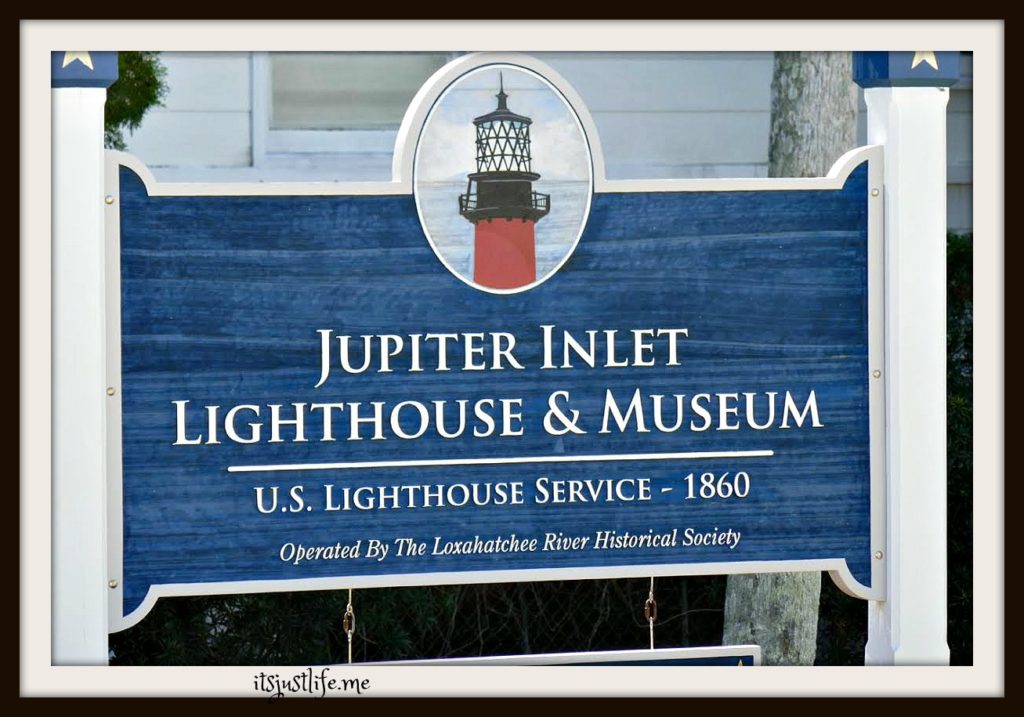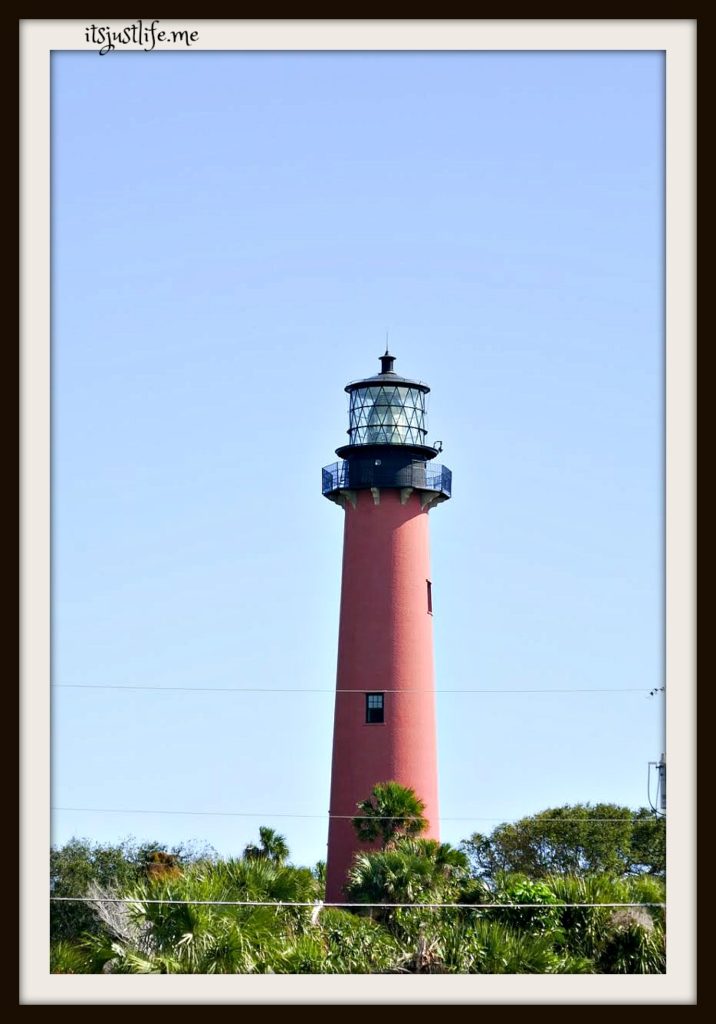Beaches may be my favorite place to visit. Next on the list has to be lighthouses. I can not tell you how many lighthouses I have visited over the years. Of course my all time favorite one is the Marblehead Lighthouse in Marblehead, Ohio. I wrote about it here but I definitely need to do an updated post as this one got a little whoppermajawed in the whole blog move.
Chris is always trying to make me happy by getting me to beaches and lighthouses. On our recent trip to Florida we were able to see a few including the Jupiter Inlet Lighthouse.

How fun is it to spy a lighthouse off in the distance and drive till you find it? That was our strategy with the Jupiter Inlet Lighthouse.

We didn’t actually go into the museum or lighthouse (we had a time commitment elsewhere) but at least I could pop out of the car to get a few shots.

The Lighthouse is operated by the Loxahatchee River Historical Society, Inc. The Lighthouse Museum opened in 1973. The Society serves as the Lighthouse Operations Manager since 1994 and holds a long term lease with the U.S Coast Guard.
The Society has three main functions which are preservation, education and operation. To read more about what this non profit does to promote these three areas click here to go to their website directly.
Want a little history about this lighthouse? Congress set the wheels in motion in 1853 with the authorization of the lighthouse to be built at Jupiter Inlet. It was one of six Florida lighthouse projects that was assigned to Army Lieutenant George Gordon Meade. This was the same man who who later defeated Robert E. Lee at the Battle of Gettysburg . While he selected the site and started the original design it was actually Lieutenant William Reynolds who improved on that design by adding some height and a double wall. Edward Yorke was the man who saw the lighthouse construction through to its completion in May 1860.
The construction of the lighthouse was delayed several times by storms, malaria and the Third Seminole Indian War. Supplies had to be sent down the Indian River on small barges bit by bit. Most of the work done on the 108-foot lighthouse, adjacent oil house, and keepers’ house were completed in less than six months. The lighthouse was officially lit on July 10, 1860.
The lighthouse fell upon “dark times” during the American Civil War when Confederate sympathizers turned the light out and kept the lighthouse dark throughout the Civil War. 5 years after the war ended the lighthouse was reassembled and the light was lit once again.
An amazing number of over 70 different lighthouse keepers kept the lighthouse going from 1860-1939. In 1939 the lighthouse joined forces with the Coast Guard and Keeper Charles Seabrook enlisted in order to continue his service. The Coast Guard continued as keepers of the lighthouse until it was automated in 1987.
Today visitors can walk around the grounds, tour the museum, climb the lighthouse and enjoy all there is to see. There is just something about a lighthouse. When I see one I have a sense of safety and security.

Don’t you just love these trees?

If you are a lighthouse lover like me where is your favorite lighthouse? Remember every comment this month means 50 cents to The Cindy Platt Boys and Girls Club of Transylvania County through Comments for a Cause.






